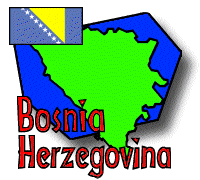Person of the Day: Renato Zrnic(j) ![]()
Place of the Day: DIA Sarajevo Euroclub
Tech Fact of the Day: Neum as the Bosnian "coast"
Group Dispatch, April 13-14

Questions? Ask Corinne ![]() !
!
Return to Fast Facts
 |
 |
 |
 |
 |
|
Itinerary/ Journal |
Discussions |
About Bosnia |
eDscape Projects |
Scrapbook |
|
|
|
|
|
Copyright 1997-2004 BikeAbout. All rights reserved.
